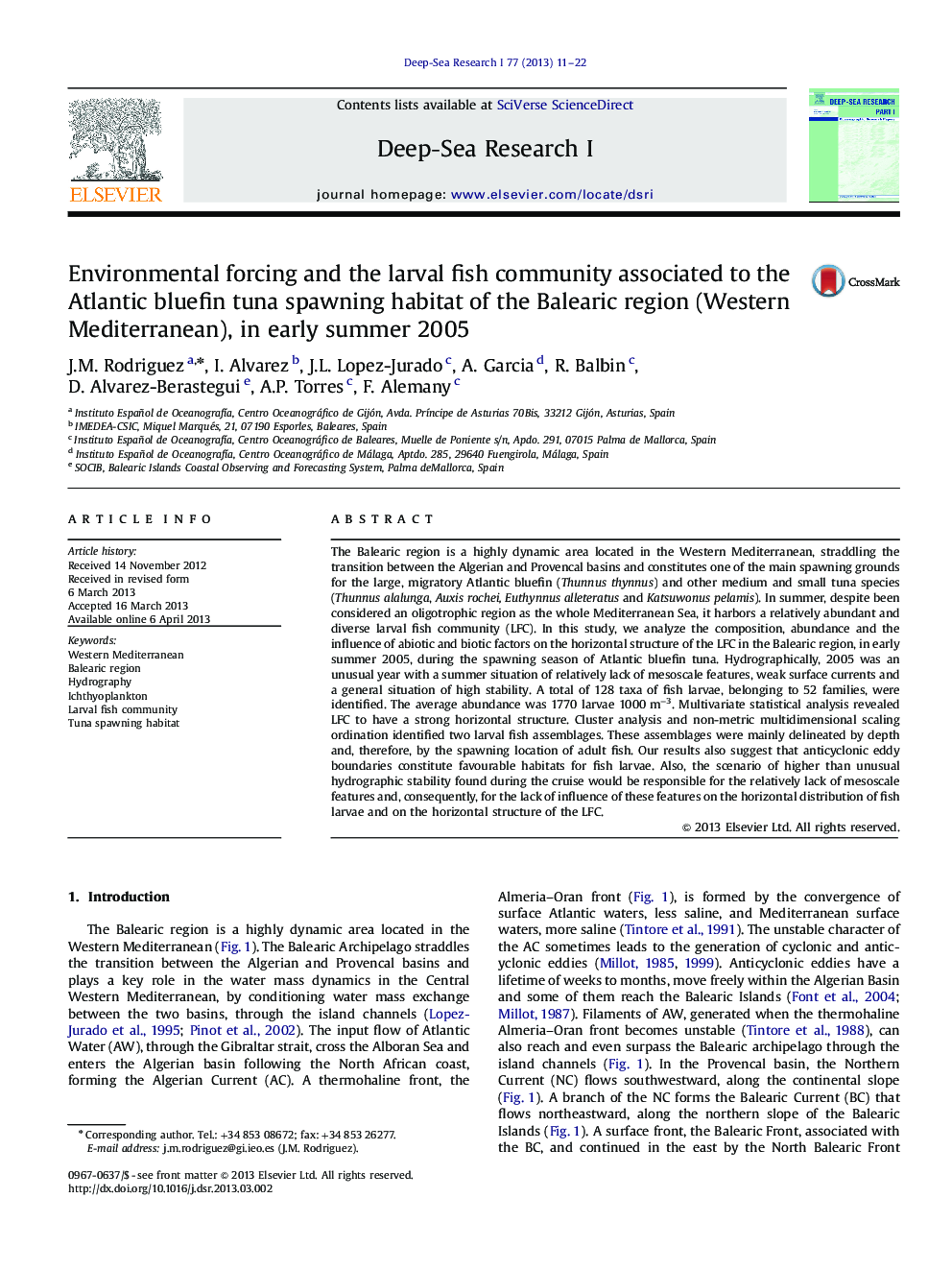| Article ID | Journal | Published Year | Pages | File Type |
|---|---|---|---|---|
| 4534660 | Deep Sea Research Part I: Oceanographic Research Papers | 2013 | 12 Pages |
•The Balearic region is a highly dynamic area located in the Western Mediterranean.•Summer 2005 showed a scenario of higher than usual hydrographic stability.•This oligotrophic region harbors a diverse and abundant summer larval fish community.•Two larval fish assemblages, largely delineated by depth, were identified.•The horizontal distribution of fish larvae was not influenced by mesoscale features.
The Balearic region is a highly dynamic area located in the Western Mediterranean, straddling the transition between the Algerian and Provencal basins and constitutes one of the main spawning grounds for the large, migratory Atlantic bluefin (Thunnus thynnus) and other medium and small tuna species (Thunnus alalunga, Auxis rochei, Euthynnus alleteratus and Katsuwonus pelamis). In summer, despite been considered an oligotrophic region as the whole Mediterranean Sea, it harbors a relatively abundant and diverse larval fish community (LFC). In this study, we analyze the composition, abundance and the influence of abiotic and biotic factors on the horizontal structure of the LFC in the Balearic region, in early summer 2005, during the spawning season of Atlantic bluefin tuna. Hydrographically, 2005 was an unusual year with a summer situation of relatively lack of mesoscale features, weak surface currents and a general situation of high stability. A total of 128 taxa of fish larvae, belonging to 52 families, were identified. The average abundance was 1770 larvae 1000 m−3. Multivariate statistical analysis revealed LFC to have a strong horizontal structure. Cluster analysis and non-metric multidimensional scaling ordination identified two larval fish assemblages. These assemblages were mainly delineated by depth and, therefore, by the spawning location of adult fish. Our results also suggest that anticyclonic eddy boundaries constitute favourable habitats for fish larvae. Also, the scenario of higher than unusual hydrographic stability found during the cruise would be responsible for the relatively lack of mesoscale features and, consequently, for the lack of influence of these features on the horizontal distribution of fish larvae and on the horizontal structure of the LFC.
